Trip Overview
Discover Nepal’s Rich Cultural Heritage and Himalayan Splendor with the Nepal Vista Tour
Nepal, nestled in the lap of the mighty Himalayas, beckons travelers with its unparalleled blend of natural beauty, spiritual richness, and cultural diversity. The Nepal Vistas Tour is meticulously designed to immerse you in this enchanting tapestry, covering key destinations such as Kathmandu, Nagarkot, Pokhara, and Chitwan, each offering its own unique allure.
Exploring Kathmandu: A Cultural Extravaganza
The journey begins in Kathmandu, the vibrant capital city, where ancient temples, stupas, and palaces narrate tales of Nepal’s illustrious history. The revered Pashupatinath Temple, nestled on the banks of the sacred Bagmati River, is not only a spiritual hub but also a poignant Hindu cremation site. Witnessing the rituals here offers a profound glimpse into Nepal’s religious traditions.
Cultural Gems: Bhaktapur and Patan Durbar Squares
A visit to Bhaktapur Durbar Square reveals architectural marvels like the Golden Temple and the 55 Windows Durbar, showcasing exquisite craftsmanship that transports visitors to a bygone era. Meanwhile, Patan Durbar Square is renowned for its intricate wooden artistry, offering a glimpse into Nepal’s artisanal heritage. Don’t miss encountering the living goddess Kumari in Kathmandu, a unique cultural tradition that adds to Nepal’s mystique.
Nagarkot: Sunrise Serenity
Perched at an altitude of 2175 meters, Nagarkot is a picturesque hill station near Kathmandu renowned for its breathtaking sunrise views over the Himalayas. It’s an ideal retreat from urban bustle, offering serene vistas and a chance to rejuvenate amidst nature’s splendor.
Pokhara: Gateway to Tranquility
Known as the “City of Lakes,” Pokhara captivates with its tranquil Fewa Lake and the mystical Talbarahi Island Temple. Davis Falls and the intriguing Mahendra Cave beckon adventurers, while the Peace Stupa offers panoramic views of the Annapurna range. Pokhara’s museums and Seti Gorges add layers to its charm, ensuring there’s something for every traveler.
Chitwan National Park: Wildlife and Culture
The Nepal Vistas Tour includes a thrilling jungle safari in Chitwan National Park, where encounters with rhinos, tigers, and elephants await amidst lush landscapes. Explore Tharu culture through village visits and immerse yourself in activities like jungle walking and bird watching, gaining insight into Nepal’s rich biodiversity and indigenous traditions.
Scenic Mountain Flight: A Majestic Finale
Concluding the journey on a high note is a scenic mountain flight from Kathmandu, offering a close-up view of the majestic Himalayas. This awe-inspiring experience provides a fitting finale to your Nepal Vistas Tour, leaving you with memories of Nepal’s awe-inspiring landscapes and warm hospitality.
Plan Your Nepal Adventure
Embark on the Nepal Vistas Tour to uncover the soul-stirring beauty of Nepal, where every moment unveils a new facet of its cultural heritage and natural splendor. Whether you seek spiritual enlightenment, adventurous escapades, or serene contemplation amidst nature, Nepal promises an unforgettable journey.
Join us on this expedition to discover Nepal’s treasures and create memories that will last a lifetime. Contact us today to plan your Nepal Vistas Tour and embark on a transformative adventure.
Tour Highlight
- Guided city tours in Kathmandu, Patan, and Bhaktapur.
- Guided city tours in Pokhara with amazing Mountain View from Sarankot.
- Panoramic views of Himalayas from Nagarkot with sunrise and sunset.
- Guided wildlife tours in Chitwan National Park.
- Experience of flying over the Himalaya
Trip Facts
Trip Itinerary Expand All
Arrival at Tribhuwan International Airport
Welcome to Nepal! We will receive you the airport and transport you to hotel.
Pre-trip meeting and sightseeing around the Kathmandu valley. Drive to Nagarkot.
After your breakfast, we meet at the hotel lobby for a quick pre-trip briefing. You will be introduced to your guide and we provide some general information about the tour. Please bring a copy of your travel insurance document and three passport-size photos.
After the meeting, we begin the tour. Please ensure that you have packed all your essential clothing and gear as necessary as we will be sleeping overnight in Nagarkot.
The places we go sightseeing today include:
Pashupatinath Temple: One of the most sacred Hindu shrines in the world, which is the opulently decorated pagoda. It is a temple of Lord Shiva and his Linga (Phallic Symbol of Lord). Legend has it that the temple was constructed in 400AD. You will be able to witness cremation of the deceased and holy baths that devotees take in the river Bagmati. Pashupatinath is next to a small protected forest, so you will likely encounter monkeys, deer, and other animals.
Bouddhanath Stupa: The giant dome monument of Buddha is located on the eastern outskirts of Kathmandu city. It is a sacred pilgrim destination of Buddhists and draws folks in thousands every day for prayers. The Stupa is 36 meters high and presents a captivating specimen of Stupa design.
Bhaktapur Durbar Square: The palace square is a collection of Shikhara- and Pagoda-style temples and a 55-windows palace made of brick and wood. The main attraction of Bhaktapur is the Lions Gate, Golden Gate, Statue of King Bhupatindra Malla and art galleries among others. After completing the tour, we drive to Nagarkot.
Drive to Pokhara on a tourist bus, van or car
Wake up early in the morning for a sunrise view over the Himalayas, you can see a continuous chain of mountains looking north and a spectacular view of Kathmandu Valley in the south. After breakfast, we drive to Pokhara on a 7-hour drive. You will drive through the beautiful Prithvi Highway, cultivated lands of Dhading district, banana farmlands of Tanahu, waterfalls, rivers, villages and highway market.
Guided sightseeing in Pokhara
Sightseeing of Pokhara valley starts today after your breakfast at 8:30am. Your guide will pick you up from the hotel in a private tourist vehicle. We visit the following places today:
Phewa Lake and Barahi Temple: These are what Pokhara is most known for – a beautiful lake with mountain views at the backdrop and a temple that sits on an island on the lake. The temple is a two-storied pagoda style temple of Hindu Goddess. We take a boat from the shores and paddle to the temple. See the reflections of Mt. Machhapurchhre (Fishtail) and Annapurna on the lake.
Seti River Gorges: “Seti” translates to “white”. The gushing white waters of the river barges through a gorge making a turbulent and majestic flow. The gorge can be seen from K.I Singh Bridge, at Bagar, Mahendrapool, and Prithvi Highway bridges.
Davis Fall: Also known as Patale Chhango, it is a waterfall tremendously popular among both domestic and international tourists. The volume of water gushing through is really impressive, especially with the sun rays hitting the water flowing into a gorge.
Gupteswar Cave: It is not only a cave but also a path to the famous Hindu temple of Pokhara, Gupteshwor Mahadev Temple. Devotees flock to the cave to pay a visit to the temple. The cave is almost 300m long, and in some stretches of the cave, you need to crawl on all four.
Museums: On the tour, you visit two more different museums, one dedicated to the Gurkha Warriors who fought in the World Wars, Falkland Wars, among many other military operations around the world; and another displaying the lifestyle and history of Thakalis, Tharu, and Gurungs families, which are some of the ethnic groups of Nepal.
Drive to Sarankot for sunrise and mountain views, then continue on to the Chitwan National Park
Today is an early morning start, well before the crack of dawn. We drive to Sarangkot on a 45-minute drive and a short hike up to Sarangkot Hill, from where you can see panoramic views of Mt. Annapurna, Mt. Machhapurchhre, Mt. Dhaulagiri and other peaks as well as the best scene of Pokhara and Phewa Lake. We enjoy the views to our heart’s content and then drive back to the hotel for breakfast.
The drive to Chitwan National Park starts here. The first couple of hours are on the same stretch as we take to Pokhara from Kathmandu. From the market of Mugling, we make a right turn and follow along the Narayani River to reach Narayanghat in about 5 hours of total driving. We reach the resort and have lunch before we set off for jungle activities inside the national park. This includes jeep safari, bird watching, and jungle walk. In the evening we see the widening view of the sunset over the jungle.
Activities in the Chitwan National Park
We have an early morning tea/coffee before we move on to more activities around the resort. We return to the resort before heading over to observe the crocodiles along the banks of Narayani River and then back for lunch. In the afternoon we resume jungle activities and walk around the jungle and go to the observation tower, a boat ride on the wide river, then back for dinner.
More activities in Chitwan, and drive back to Kathmandu
We complete the remaining activities in Chitwan and drive back to Kathmandu on a 6-hour drive on Prithvi Highway. Views from of high hills, gorges of Narayani, farmland of Dhadhing and other rustic countryside are incredible views we get to enjoy on the drive. In the evening you will have leisure time if you like to take a stroll, visit the old market of Ason and Indrachowk, or just take a rest.
Morning mountain Flight and Guided sightseeing in Kathmandu
The highlight of today is the Everest mountain flight. Your guide will pick you up early in the morning and we head over to the airport for a mountain flight. The one-hour flight will take you close to the mountains for spectacular views of the mountains and awe-inspiring massifs of rocks and aerial views of Mt. Everest, Mt. Kanchenjunga and other peaks on the Tibetan border. After the Mountain Flight your sightseeing begins.
Swoyambhunath Stupa: Also called the Monkey Temple, Swayambhu is a World Heritage Site, one of the holiest places of Buddhism and also Hinduism. It is perched atop a hillock by the edge of Kathmandu city. The massive stupa is also a famous tourist site for the amazing view of the valley it sports and also the monkeys that flock to the premises, from where it derives its nickname Monkey Temple.
Kathmandu Durbar Square: Another World Heritage Site, Kathmandu Durbar Square was built in the 12th/13th century, where Malla King Dynasty ruled over the city. King Prithvi Narayan Shah of Gorkha district annexed the city almost 300 years ago. The Durbar has many different exotic architectural design, wood carving in windows and doors. The courtyard, temples, Kumari (a Living Goddess) is the main attraction of Durbar Square. Inside the square, there is a museum that belongs to Kings and reflects of his regime period.
Patan Durbar Square: Decorated with artistic courtyard beautiful pagoda temples, Patan Durbar Square is another World Heritage Site that has a noticeable temple built to dedicated to Lord Krishna, made of stone in the 17th century. There is a museum containing bronze statues and religious objects. The trip of Patan also covers the Tibetan Refugee Camp and handicraft center.
In the evening your guide will pick you up for your farewell dinner in a typical Nepali restaurant with folk songs and dance performance. You have the option to extend your trip to continue onto rafting adventure, Kathmandu valley shopping tour, bungee jumping mountain biking and other activities.You can get more information in our Activities Page.
Trip conclude
Finally, the entire trip is over.
What Includes & Excludes
Includes
Accommodation
- Three Nights in Hotel Kathmandu in BB Plan
- Hotel accommodation is per the Itinerary in the BB plan, except for Chitwan.
Additional Services
- All government taxes and official expenses.
- Farewell dinner one night before the client’s final departure in a typical Nepali Restaurant with culture dance. Your guide will accompany you.
- Trekking/tour permits, entrance fees.
- Accommodation, foods, insurance, salary, equipment, and medicine for field staffs.
Flight
- A mountain flight as per itinerary
Guides and Porters
- An English speaking local guide
Additional Services
- All government taxes and official expenses.
- Farewell dinner one night before the client’s final departure in a typical Nepali Restaurant with culture dance. Your guide will accompany you.
- Trekking/tour permits, entrance fees.
- Accommodation, foods, insurance, salary, equipment, and medicine for field staffs.
Meals
- Full board meals (Breakfast, Lunch, and Dinner) in the Chitwan National Park.
Excludes
- Anything not mentioned in the price includes.
- Personal trekking gears/equipment.
- Tips for trekking staff (Tipping is expected).
- Lunch and dinner in the city.
- All drinks including bottled/boiled water along the trekking route
- Visa fees and travel insurance.
- International airfare to and from Nepal.
Join the Departure
Join the departures 
Guest Reviews
We highly recommend Broad Adventures they provided exceptional guidance on our Everest Base Camp trek. Our guide’s Gynau’s professionalism,...
Read More...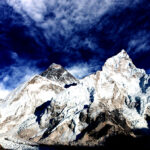
David Neufeld
CanadaIf you are looking for a tour to see the Mt Everest base camp look no further. I have...
Read More...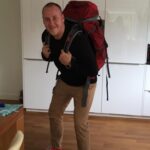
Tim Troost
AustraliaI was looking at an exotic trek adventure. After looking for a bunch of places to go I thought...
Read More...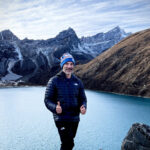
Keith B.
USAKeshab was our most gracious and amiable guide in Kathmandu and to Everest basecamp. My wife accompanied me on...
Read More...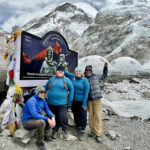
Ken Byers , Nevada
USAMy son and I went for trekking in Nepal in 2009, and we were lucky to have Keshab Khanal...
Read More...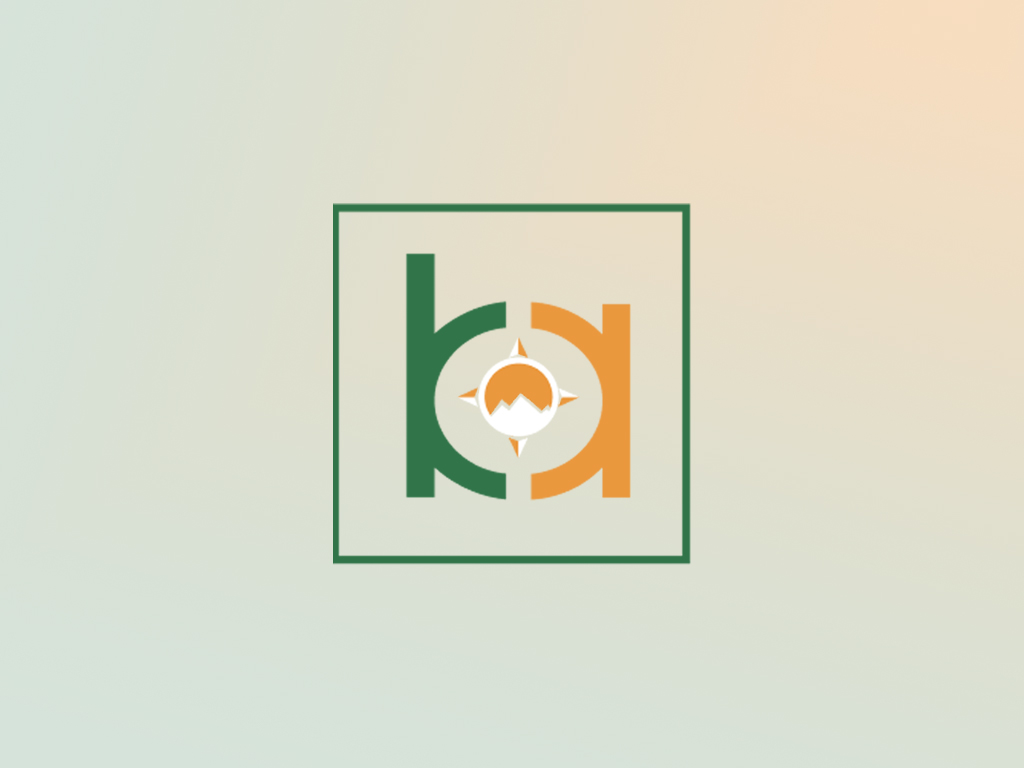
Dr. Raphael Hemmendinger
Jerusalem , IsraelIn 2005 I came to Nepal for the second time, this time whith a very specific queste. I wanted...
Read More...
Richard Rijken
Amsterdam , NetherlandsI was always willing to go to the Himalayas and explore some of the beauties hidden in the sacred...
Read More...
John Peter
Manchester , United KingdomNamaste! This was my first time to Nepal, and I had an amazing time on my trek. From the...
Read More...
David Patrician
Hamburg , GermanyI was on trekking from 24.10.10 to 5.11.10 in the half part of Annapurna circuit from Bhulbhule to Jomsom....
Read More...
Vaya Bairaba
Athens , GreeceImportant Info
Ultimate Guide for Nepal Vista Tour
Nepal stands out as a premier destination for its captivating Himalayan landscapes and rich cultural heritage, encompassing temples, stupas, and various religious sites. The Nepal Vista Tour meticulously explores the cities of Kathmandu, Nagarkot, Pokhara, and Chitwan, offering a harmonious blend of culture, spirituality, and natural beauty.
Best Time for Nepal Vista Tour
- Autumn (September to November): Clear skies and moderate temperatures make it the best time for trekking and sightseeing.
- Spring (March to May): Blooming rhododendrons and pleasant weather are ideal for outdoor activities.
- Winter (December to February): Lower elevations are still accessible, and you can enjoy quieter tourist spots.
- Monsoon (June to August): Lush landscapes but frequent rains can affect travel plans.
Top Destinations includes in Nepal Vista Tour
- Kathmandu Valley
- Kathmandu Durbar Square: A UNESCO World Heritage Site showcasing ancient architecture and cultural heritage.
- Swayambhunath (Monkey Temple): Offers panoramic views of Kathmandu and a rich Buddhist history.
- Pashupatinath Temple: A sacred Hindu temple complex on the banks of the Bagmati River, significant as a Hindu cremation site.
- Patan Durbar Square: Celebrated for its exceptional wooden craftsmanship.
- Bhaktapur Durbar Square: Known for the Golden Temple and the 55 Windows Durbar, showcasing exquisite artistry.
- Living Goddess Kumari: Unique cultural experience in Kathmandu.
- Nagarkot
- Location: Situated at an elevation of 2175 meters near Kathmandu.
- Highlights: Breathtaking sunrise views over the Himalayas, serene escape from the city’s hustle and bustle.
- Pokhara
- Phewa Lake: Boating with views of the Annapurna range.
- Talbarahi Island Temple: A temple on an island in Phewa Lake.
- Davis Falls and Gupteshwor Cave: Unique natural attractions.
- World Peace Pagoda: A hilltop Buddhist stupa offering serene surroundings and views of the lake and mountains.
- Seti Gorges: Natural wonders carved by the Seti River.
- Museums: Various museums showcasing local culture and history.
- Chitwan National Park
- Wildlife Safari: Home to Bengal tigers, one-horned rhinos, and a variety of bird species.
- Activities: Jungle walking, bird watching, and exploration of Tharu culture.
Activities to Enjoy
- Trekking and Hiking: From short hikes to the Annapurna region to the challenging Everest Base Camp trek.
- Cultural Tours: Explore ancient temples, palaces, and UNESCO World Heritage Sites.
- Adventure Sports: Paragliding in Pokhara, white-water rafting in Trishuli River, and bungee jumping in Bhote Koshi.
- Wildlife Safaris: Jeep and elephant safaris in Chitwan National Park.
- Festivals: Experience vibrant festivals like Gai Jatra in the durbar squares, particularly vibrant within the Newar community.
Travel Tips
- Visa and Permits: Obtain a visa upon arrival at Tribhuvan International Airport or apply online. Trekking permits are required for specific regions.
- Health and Safety: Stay hydrated, use bottled or purified water, and acclimate properly when trekking at high altitudes.
- Local Etiquette: Dress modestly, especially when visiting religious sites, and respect local customs and traditions.
- Currency: The local currency is the Nepalese Rupee (NPR). ATMs are available in major cities, but it’s advisable to carry cash when traveling to remote areas.
Conclusion
The Nepal Vista Tour seamlessly integrates panoramic mountain views, city exploration, and a thrilling jungle safari. From the majestic temples and stupas of Kathmandu to the serene hill station of Nagarkot, the diverse offerings of Pokhara, and the adventurous jungle safari in Chitwan National Park, this tour promises an unforgettable journey through Nepal’s enchanting landscapes and vibrant heritage. The journey culminates with a scenic mountain flight from Kathmandu, providing a closer and awe-inspiring view of the majestic Himalayas, completing the Nepal Vista Tour on a high note.
Get Trip PDF file
Why travel with
Broad Adventures
Since 2010, we have curated unique itineraries that offer once-in-a-lifetime experiences, ensuring every trip is filled with joy and adventure. Our focus on the fun factor and the right amount of challenge allows you to achieve a profound sense of personal accomplishment, all while enjoying the camaraderie of like-minded travelers.
Small-Group Adventures
Join an intimate group of like-minded travelers who share your passion for discovering the world's wonders safely and confidently. Our small group settings foster a deeper connection with your fellow explorers and the incredible destinations we visit.
Expert Local Guides
We exclusively employ local guides and porters for their unparalleled knowledge and expertise. Their insights and firsthand experiences enrich your journey, giving you a deeper understanding and appreciation of the local culture, history, and environment.
Responsible for Tourism
Your safety is our utmost priority. Our dedicated team of trained professionals ensures the highest standards of care, including providing fresh and hygienic meals, comprehensive First Aid supplies, and round-the-clock communication services. We are committed to responsible tourism practices, emphasizing the importance of sustainable and ethical travel.
Health and Saftey
Promoting responsible tourism is essential, as it calls for a collective effort from everyone involved in the industry. By prioritizing health and safety, we ensure that each journey is not only enjoyable but also respectful of the destinations and communities we visit.
How can we help you?
- City Tour Equipment
- City Tour Season
- Climbing Equipment
- Climbing Season
- General Questions
- Guide and Staffs
- Nepal Overview
- Tipping
- Transportations
- Trekking Equipment
- Trekking Season
- VISA info
- Weather and Temperature
Do you provide any equipment for the trek?
Broad Adventure provides you a basic equipment like a Sleeping Bag and a down Jacket, for the tea-house trek. And for the climbing trip, we provide the basic equipment. For a camping trek check it once including the section.
What is the time zone of Nepal?
NPT (UTC+05:45)
What cultural attractions can I explore in Kathmandu?
Kathmandu is home to historical sites like Durbar Square, Swayambhunath (Monkey Temple), and Pashupatinath Temple. These landmarks showcase Nepal’s rich cultural and religious heritage, providing visitors with a deep insight into the country’s history.
What are the must-visit cities in Nepal?
Kathmandu, Pokhara, Bhaktapur, and Patan are popular cities offering rich cultural experiences. Each city has its own unique charm, historical sites, and vibrant local markets.
Do you provide any equipment for the trek?
Broad Adventure provides you a basic equipment like a Sleeping Bag and a down Jacket, for the tea-house trek. And for the climbing trip, we provide the basic equipment. For a camping trek check it once including the section.
Do I need to tip the guide and porters? What is the standard tip?
Tips is expected by your team members and normally the standard is 10% of your total trip cost.
What is the climbing season in Nepal?
The main climbing seasons are spring (April to May) and autumn (September to November). During these times, the weather is more stable, providing safer and more favorable conditions for climbing expeditions.
Are there other mountains in Nepal suitable for climbing?
Yes, Nepal is home to numerous trekking peaks and mountains suitable for climbing, such as Island Peak, Mera Peak, and Lobuche East. These peaks offer a challenging yet rewarding experience for climbers of various skill levels.
Can I climb Mount Everest as a tourist?
Climbing Mount Everest requires significant preparation, experience, and permits. Most climbers join organized expeditions with experienced guides. Climbing Everest is a serious undertaking that demands physical fitness, technical skills, and a high level of commitment.
Do I need to tip the guide and porters? What is the standard tip?
Tips is expected by your team members and normally the standard is 10% of your total trip cost.
What is the voltage and plug type used in Nepal?
The standard voltage is 230V, and the plug type is the Europlug (Type C) and the British-style plug (Type D). It’s advisable to bring adapters if necessary.
What is the voltage and plug type used in Nepal?
The standard voltage is 230V, and the plug type is the Europlug (Type C) and the British-style plug (Type D). It’s advisable to bring adapters if necessary.
Is it necessary to get travel insurance for Nepal?
Yes, travel insurance is highly recommended, especially for trekking and adventure activities. Ensure that your insurance covers medical emergencies, evacuation, and trip cancellations.
What languages are spoken in Nepal?
The official language is Nepali, but English is widely understood in tourist areas. Additionally, various ethnic groups have their own languages.
What is the currency used in Nepal, and are credit cards widely accepted?
The official currency is the Nepalese Rupee (NPR). While major cities and tourist areas accept credit cards, it’s advisable to carry cash in remote areas. ATMs are available in urban centers.
How can I get around within cities in Nepal?
Transportation options include taxis, rickshaws, and local buses. Walking is also a great way to explore the cities, especially in the old quarters. Many cities have well-preserved historic areas, and navigating them on foot allows for a more immersive experience.
What cultural attractions can I explore in Kathmandu?
Kathmandu is home to historical sites like Durbar Square, Swayambhunath (Monkey Temple), and Pashupatinath Temple. These landmarks showcase Nepal’s rich cultural and religious heritage, providing visitors with a deep insight into the country’s history.
Can I climb Mount Everest as a tourist?
Climbing Mount Everest requires significant preparation, experience, and permits. Most climbers join organized expeditions with experienced guides. Climbing Everest is a serious undertaking that demands physical fitness, technical skills, and a high level of commitment.
Are permits required for trekking in Nepal?
Yes, trekking permits are required for most trekking regions. The type of permit depends on the specific trekking area. It’s important to obtain the necessary permits from the respective authorities to support local conservation and management efforts.
When is the best season for treks in Nepal?
From March to mid-June and September to December is the best season for treks.
What is the fitness required for the treks?
Generally, to trek in Nepal we should have good physical and health conditions. And also able to walk 4- 7 hours in day at a high altitude with your little backpack.
Do you pick me up at the Airport upon my arrival?
Yes, our airport representative welcomes you at the airport and transfers you to the hotel in a private tourist vehicle.
Does my guide/porter speak English?
They speak English. All the guides are professional and due to their professionalism, they speak good English. The guide’s English is enough to explain the local culture, activities, and religions.
Are the treks and tours secured? What about the security?
Providing security to our clients is our principal. The government-licensed holder guides and other crew members are carefully assigned for your trip. Even though, would like to counsel you to take care of your equipment, and bags. If you doing a tea-house trek your accommodation is in a local guesthouse, where you have to be a precaution yourself at all times. And if you are on a camping trek always keep your bags inside the tent and while at nighttime please keep your bag in the middle of the tent. The camping leader assigns a Sherpa as a guard throughout the nighttime.
What sort of ground transportation do you use?
Normally we assign a car for up to 2 people and a Jeep for up to 5 people and then a bus for up to 14 PAX and Coster and Sutlej Bus depending on group size. There are some trekking routes, which are dirt roads for them we assign 4WD Jeeps. It also depends on what services you opt for.
Are the staff insured by your company?
Yes, all of the staff and crew members are insured.
Should I need to join the group?
Joining a group depends on your booking and the option that you choose. If you have booked for Private Trip then obviously you will not join. Otherwise, normally the same trip departs on the same day then the group will join.
Do you arrange a private trip?
Yes, of course, we will arrange a private tour.
How big is a group size?
We will try to arrange a small group of willing people, which immortalize the treks. Normally we encompass 12 -16 people in a group. (This is not to apply to those who want to do a Private Trip, no minimum and maximum for them.)
Is the drinking water okay? Or do I need to use tablets?
For drinking water you can buy bottled water and purified mineral water on tea-house treks and city tours. And in the camping trek, the camping cook provides you with boiled water. For some cases of remote area trekking it would be better to have some purification tablets that you can buy in Kathmandu.
What are the accommodations and meals like?
All the meals that you provided are hygienic and fresh. While you are on a camping trek you get meals prepared by a professional camping cook. And if you are doing a tea-house trek you will get the main course as like in the cities. For accommodation on the camping trek, you will have a tent with good-quality mattresses and a sleeping bag. And if you are on a tea-house trek you will normal twin-sharing room with basic facilities with a warm mattress and blanket, and also we provide a sleeping bag if you need it.
Is the shower facility during the tour/trek?
Yes, you can have a shower during the trek. In the camping trek, you will get a shower in a shower tent which is provided 3-4 times in the whole trek, depending on the duration of the trek. And in a tea-house trek, we will provide you attached room where possible and for the rest of town, you will pay for a shower.
Do you provide any equipment for the trek?
Broad Adventure provides you a basic equipment like a Sleeping Bag and a down Jacket, for the tea-house trek. And for the climbing trip, we provide the basic equipment. For a camping trek check it once including the section.
Is there any possibility of communicating in my hometown?
Yes, you can. In the Everest and Annapurna regions, you can connect via Phone, or Internet both available in most of the town and, in some remote routes, you may need to use a satellite phone that is carried by your trek guide or also get in the local town.
Can I charge the batteries of cameras, and phones?
Yes, you can charge your devices, but recommended you bring your plugs, and chargers and also do not leave unattended anything while charging in a lobby or somewhere in the trekking guesthouse. And if you are on a camping trek it’s quite hard to charge the phone so we advise you to bring a portable charge.
Are there any health precautions I should take before traveling to Nepal?
Vaccinations for diseases like typhoid, hepatitis, and tetanus are advisable. Altitude sickness prevention measures should be considered for high-altitude treks.
How can I find a reliable trekking guide in Nepal?
Reliable guides can be found through licensed trekking agencies, recommendations from fellow travelers, or by checking with the Nepal Tourism Board. Ensure that your guide has the necessary permits and is experienced in the chosen trekking region
Is hiring a local guide recommended for exploring Nepal?
Yes, hiring a local guide is highly recommended, especially for trekking and exploring remote areas. Guides provide valuable insights into the culture, history, and geography of the region, ensuring a safer and more enriching experience.
Is hiring a local guide recommended for exploring Nepal?
Yes, hiring a local guide is highly recommended, especially for trekking and exploring remote areas. Guides provide valuable insights into the culture, history, and geography of the region, ensuring a safer and more enriching experience.
Is Nepal a safe country for tourists?
Yes, Nepal is considered safe for tourists. However, like any travel destination, it’s essential to follow common-sense safety practices and stay updated on travel advisories. Local people are welcoming, and the country values its reputation as a safe and friendly destination.
What is the best time to visit Nepal?
The best time to visit Nepal is during the spring (March to May) and autumn (September to November) seasons when the weather is generally favorable for outdoor activities. During these periods, the skies are clear, and the temperatures are moderate.
What makes Nepal a popular tourist destination?
Nepal is renowned for its stunning Himalayan landscapes, rich cultural heritage, diverse wildlife, and warm hospitality. The country offers a unique blend of adventure, spirituality, and natural beauty.
What is the standard tip?
Tipping is subjective so it depends on your satisfaction. However, the standard is about 20% of the trip cost you can share with the staff.
Do I need to tip the guide and porters? What is the standard tip?
Tips is expected by your team members and normally the standard is 10% of your total trip cost.
Do you provide any equipment for the trek?
Broad Adventure provides you a basic equipment like a Sleeping Bag and a down Jacket, for the tea-house trek. And for the climbing trip, we provide the basic equipment. For a camping trek check it once including the section.
Are permits required for trekking in Nepal?
Yes, trekking permits are required for most trekking regions. The type of permit depends on the specific trekking area. It’s important to obtain the necessary permits from the respective authorities to support local conservation and management efforts.
Do I need a guide for trekking in Nepal?
While it’s not mandatory, hiring a local guide is highly recommended for safety, navigation, and cultural insights. Guides are familiar with the terrain, can provide valuable information about the region, and ensure a smoother trekking experience.
What are the most popular trekking destinations in Nepal?
The Everest Base Camp trek, Annapurna Circuit, Langtang Valley trek, and Manaslu Circuit are among the most popular trekking routes in Nepal. Each trek offers unique experiences, from breathtaking mountain views to encounters with diverse cultures.
When is the best season for treks in Nepal?
From March to mid-June and September to December is the best season for treks.
Do I need to tip the guide and porters? What is the standard tip?
Tips is expected by your team members and normally the standard is 10% of your total trip cost.
Can I extend my tourist visa to Nepal?
Yes, tourist visas can be extended at the Department of Immigration in Kathmandu or the Immigration Office in Pokhara. Extension fees and requirements vary, and it’s advisable to initiate the process a few days before the current visa expires.
What documents are required for a tourist visa on arrival?
Passport with at least six months validity, a completed visa application form (available at the airport), and two passport-sized photos are required. Additionally, visa fees must be paid in cash (USD or equivalent).
What are the types of visas available for tourists?
Tourist visas are available for duration ranging from 15 to 90 days. Extensions can be obtained within Nepal if needed. Other visa categories include business visas, student visas, and diplomatic visas, each with specific requirements.
How do I obtain a visa for Nepal?
Tourist visas for Nepal can be obtained upon arrival at Tribhuvan International Airport in Kathmandu or at various land entry points. Alternatively, you can apply for a visa at the Nepalese embassy or consulate in your home country before traveling.
What is the monsoon season in Nepal?
The monsoon season in Nepal runs from June to early September. During this time, the country receives heavy rainfall, particularly in the southern plains and the hilly regions. The monsoon brings lush green landscapes but can also cause landslides and flooding in some areas.
What is the time zone of Nepal?
NPT (UTC+05:45)
Nepal Vista Tour
Nepal Vista Tour
per person

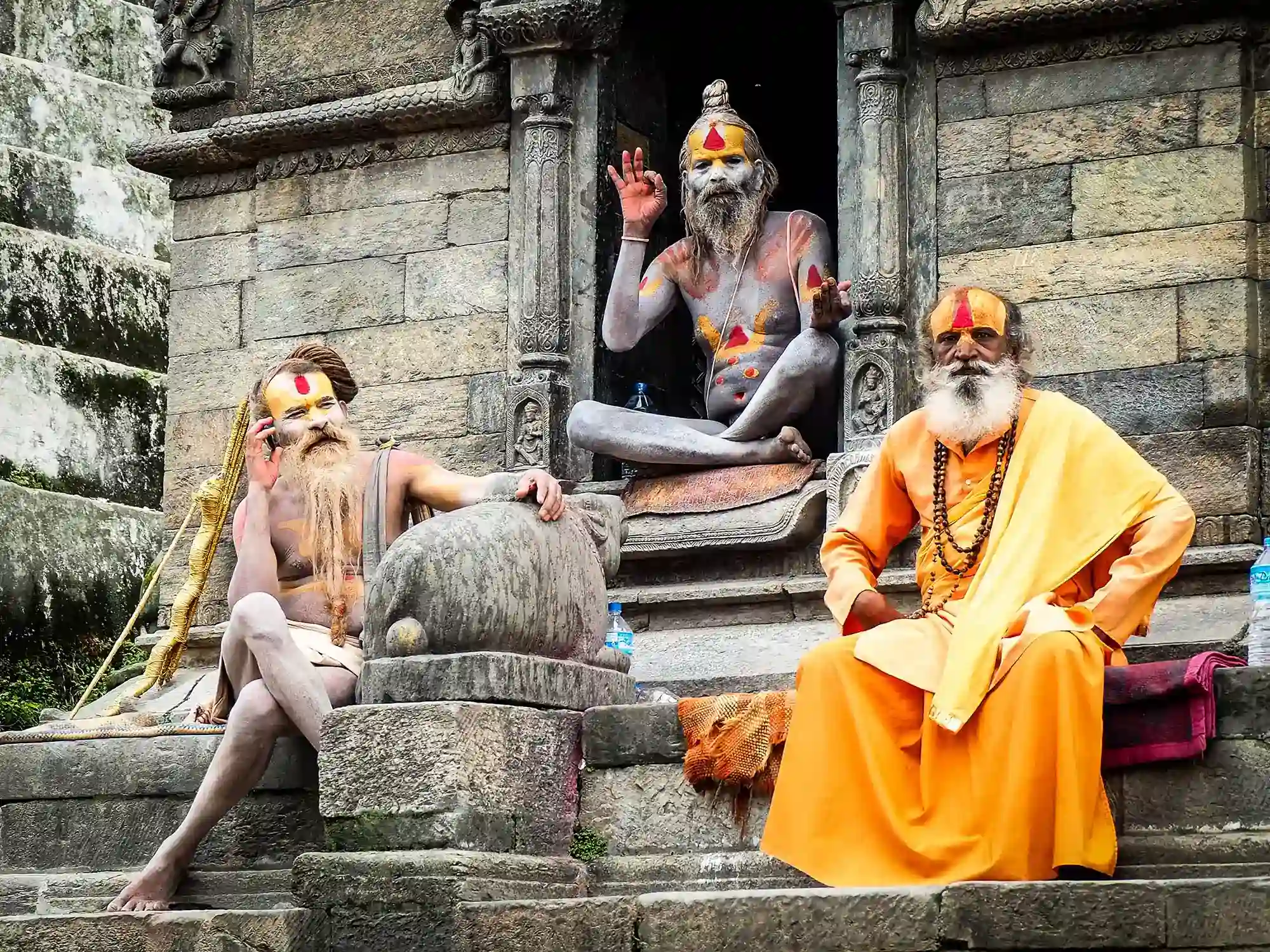
 Group Size: 1-15 PAX
Group Size: 1-15 PAX  Duration: 9 Days
Duration: 9 Days  Trip Start: Kathmandu
Trip Start: Kathmandu  Trip End: Kathmandu
Trip End: Kathmandu  Trip Grading: Easy
Trip Grading: Easy 



